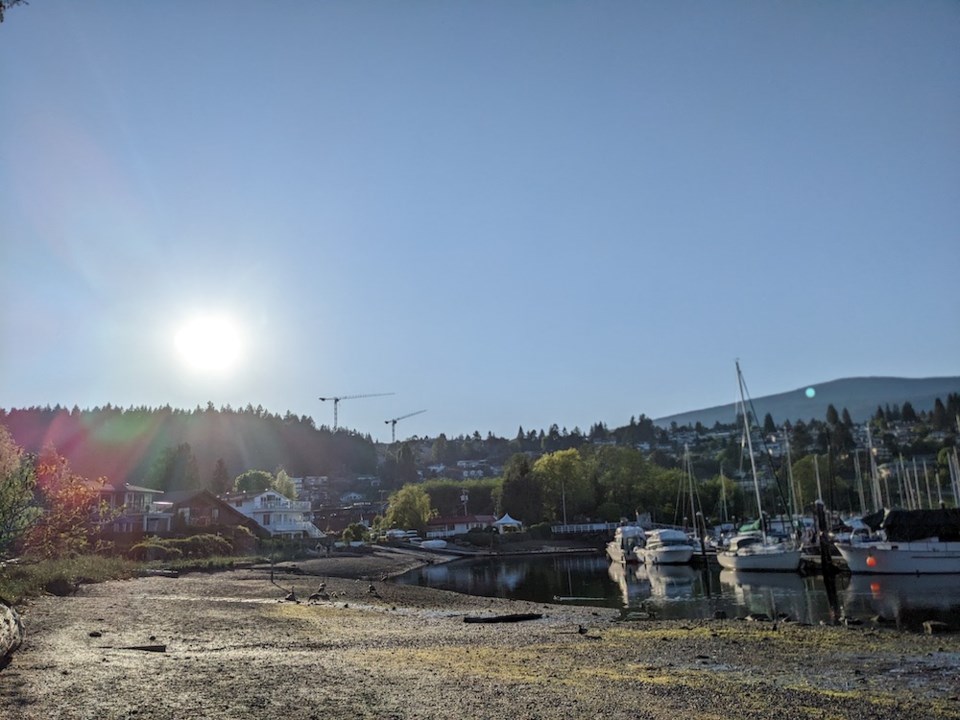The Town of Gibsons has reached a major milestone in its ongoing efforts to tackle climate change and protect local natural resources with the completion of the Source to Sea Project.
The initiative, conducted in partnership with the Natural Assets Initiative (NAI) is part of the town’s evolving Natural Asset Management (NAM) strategy and highlights the critical role that natural systems play in providing essential services, such as safe drinking water.
The Source to Sea project examined natural assets and their interactions across the entire watershed, from where it begins at Mount Elphinstone, to where it empties into the ocean. The watershed is located on the traditional territory of the Skwxwú7mesh Úxwumixw (Squamish Nation), including largely undeveloped lands claimed by the Crown and the Sunshine Coast Regional District.
Michelle Lewis, natural asset technician for the Town of Gibsons, said in a press release that Source to Sea is the concept that all water is connected.
“What happens in the upper watershed impacts everything downstream and understanding these interactions is key to safeguarding our environment and community.”
Gibsons first began exploring NAM in 2016, and Source to Sea is the latest evolution of this work. By focusing on the entire watershed, which supplies nearly 100 per cent of the town’s drinking water, the project provides crucial insight into how natural assets — such as forests and wetlands — support both the environment and the community, and how these services can be preserved using asset management processes, which have been adapted for the unique considerations of nature.
Lewis is also encouraging other local governments to follow Gibsons' lead by starting with a simple inventory of natural assets.
“The links to NAM are already there,” she advises. “By taking manageable steps and leveraging available grants, communities can build more resilient infrastructure while addressing climate adaptation and reconciliation goals.”
Michelle Molnar, technical director at NAI, described Gibsons as a “living lab,” which continues to push the envelope on natural asset management — from employing the first natural asset technician to exploring marine-surface water interactions — throughout Canada and beyond.
“We’re grateful for the opportunity to collaborate with Gibsons and partners like ESSA Technologies to advance NAM,” Molnar said in the release.
This project marks the first time that marine-surface water interactions were explored in the contact of NAM. And, given that 40 per cent of the world’s population lives within 100 kilometres of a coast, building awareness of the connections between water systems is highly relevant to water security for millions of people, especially when efforts are based on scalable, replicable asset management platforms, said the release.
Key findings of the project
The Source to Sea Project focused on assessing the condition of the Aquifer 560 Watershed, valuing its natural assets and developing holistic recommendations to maintain them, not just in isolated areas but connected across the watershed. Key findings include:
- The value of these assets for stormwater management alone (just one of many services) is estimated at $40 million.
- Natural assets provide approximately a year in services, and roughly $250,000 in carbon storage (one-time value).
- If forests were lost in four of the areas zoned for urban development, it would cost $1.4 million to replace the stormwater services those forests provided.
- If the town were to increase wetlands in areas identified in the project, the improved natural assets could provide approximately $3 million in stormwater benefits.
The release notes, the Town of Gibsons is committed to building on the successes of Source to Sea and in the coming years, plans further collaboration with neighbouring jurisdictions as a way to addressing watershed management challenges.



